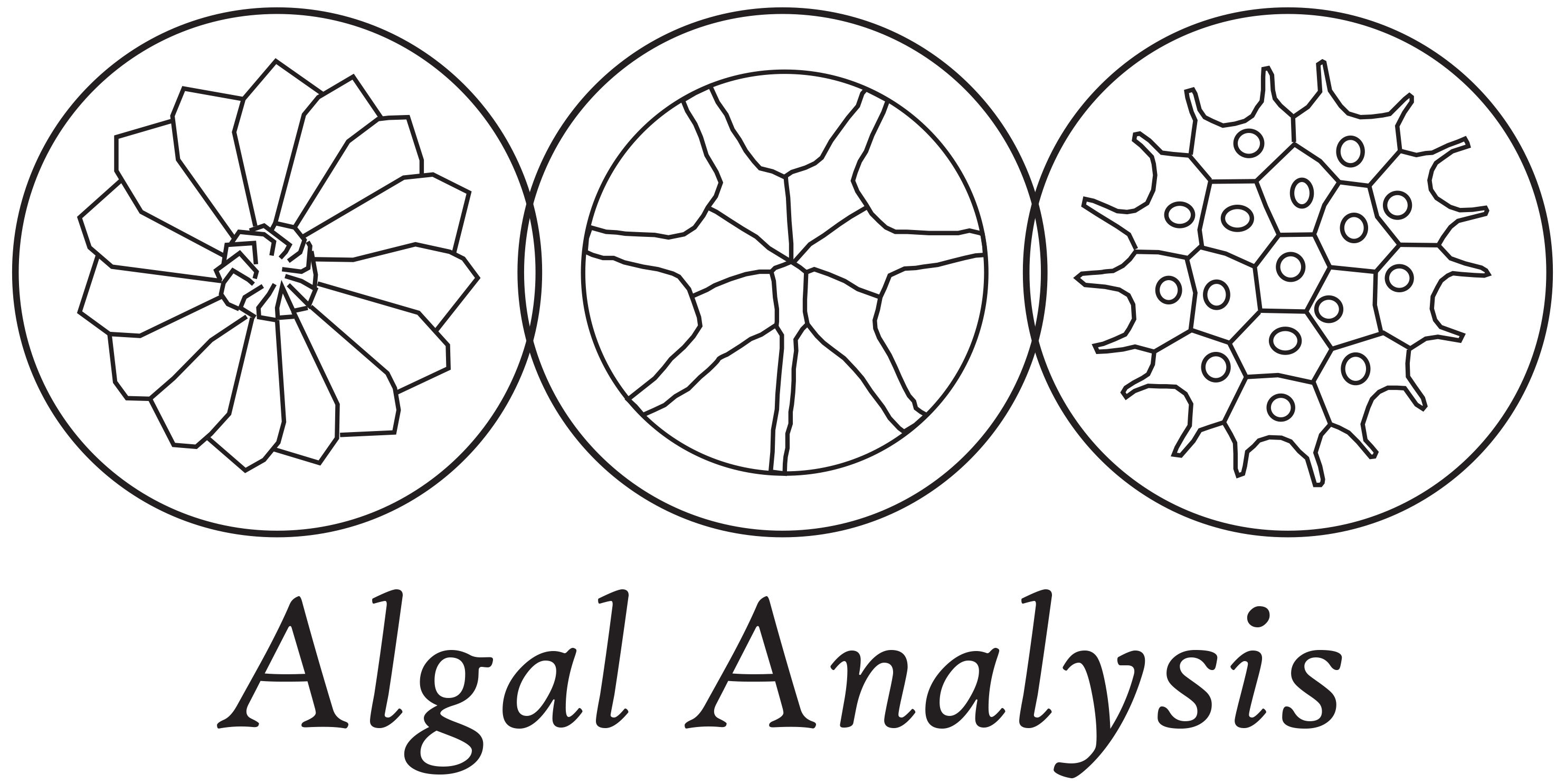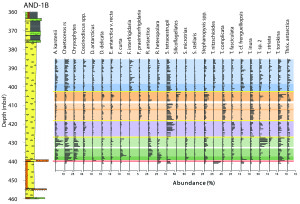Due to their rapid growth potential and response to environmental influences algae provide a useful biological indicator of local and regional environmental changes as well as broader climate impacts.
Geologically diatoms can provide important clues regarding the paleoenvironment/paleoclimate at the time of deposition of the sedimentary units studied. Species can be closely associated with specific environments, such as sea ice in the examples below, indicating intervals with greater or lesser influence of sea ice.
The diatom communities present in modern freshwater systems also reflect the environmental conditions in which they grew. Metrics values are often used to summarize these different possible conditions. Species which occur in greater numbers in high nutrient environments can be compared to those who do better in more oligotrophic conditions, providing a more long-term record of nutrient influence and impact at a site then can be gained from a single water chemistry sample. The number of each in a series of samples, such as shown below,



